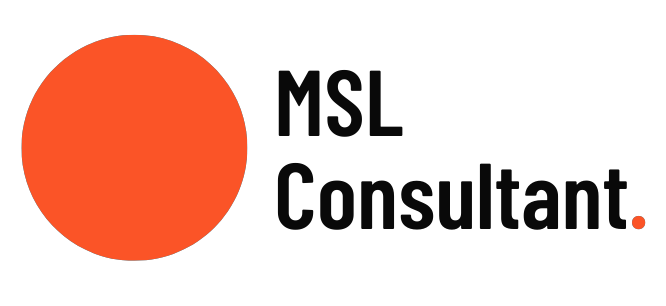Why MSLs need to Link KOL Insights to Strategic Objectives
Medical Affairs often struggle to communicate their value. Countless MSLs I work with (training enquiries to info@mslconsultant.com) struggle to demonstrate what they bring to their team.
MSLs need to proactively show their value. The easiest way to show your value is anchor what you are doing to what the company has already decided is important.
Therefore, one simple, yet effective way to show that your activities as an MSL are aligned to the brand’s objective is to link your KOL insights to the strategic objectives.
Why should you link KOL insights to strategic objectives? Because then you can show your value as an MSL.
It can be difficult for MSLs to show their value. Just because you are out in the field seeing lots of people, doesn't mean you are adding value.
Are you seeing the right people? And by right people, I mean people who can actually help the company achieve their medical objectives as defined in the medical affairs strategy.
Quantitative medical affairs metrics are ineffective at showing MSL value. Instead, you need to develop a clear understanding of the medical affairs strategy and then works backwards and ask the question:
Based on what we are trying to achieve, who (which KOLs) can help me achieve this objective?
Once you meet with these KOLs and gather insights use the following framework to develop insights that are strategically relevant.
Step 1: Identify your insight.
e.g. Prof X shared his clinical practice is guided by national guidelines which will be updated this year.
Step 2: Define the “so what” of your insight. How is it relevant to the medical strategy?
e.g. One of the objectives in the Medical Strategy is to build trust with the medical community in [relevant] therapeutic area as the company has no heritage in the space and Drug X is a new drug.
Step 3: Define the “now what” of your insight. What action will be taken from this insight which will help you achieve the medical objective and who will own this action?
e.g. Identify and develop relationship with authors of national guideline to ensure Drug X is positioned in the updated guideline which will help the company build trust with the medical community in [relevant] therapeutic area. This will be owned by the MSL.
A Medical Science Liaison (MSL) and other external facing members of medical affairs team can follow this framework to really showcase their strategic mindset and commercial acumen. More detailed training on adding value to your company and building collaborative relationships with KOLs can be found at my Master KOL Engagement Course. 30+ short videos with learnings from almost 10 years of life science experience, KOL development and training MSLs. Get instant access here.
In summary, Information from conversations with KOLs can be transformed into strategically important actionable insights by asking 2 questions.
💡So what?
Ask yourself: How is this relevant to the medical strategy?
💡Now what?
Ask yourself: Based on this information, what action will be taken to achieve what is outlined in the medical strategy?
